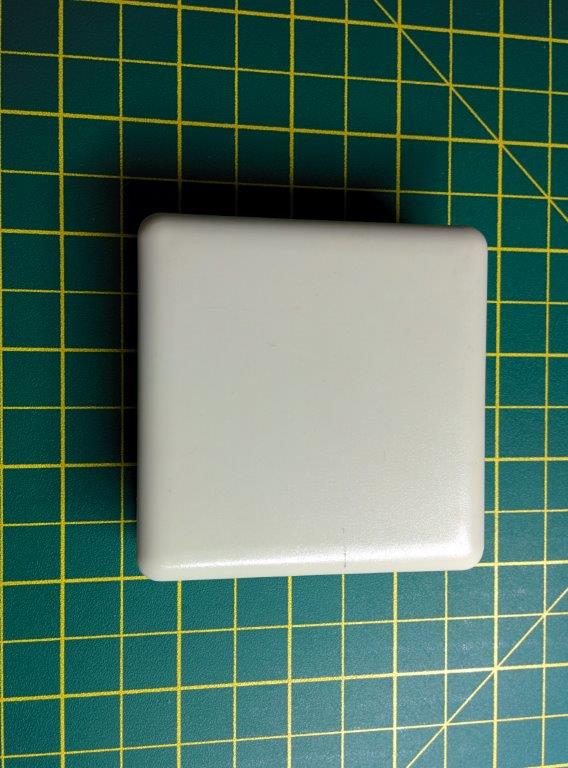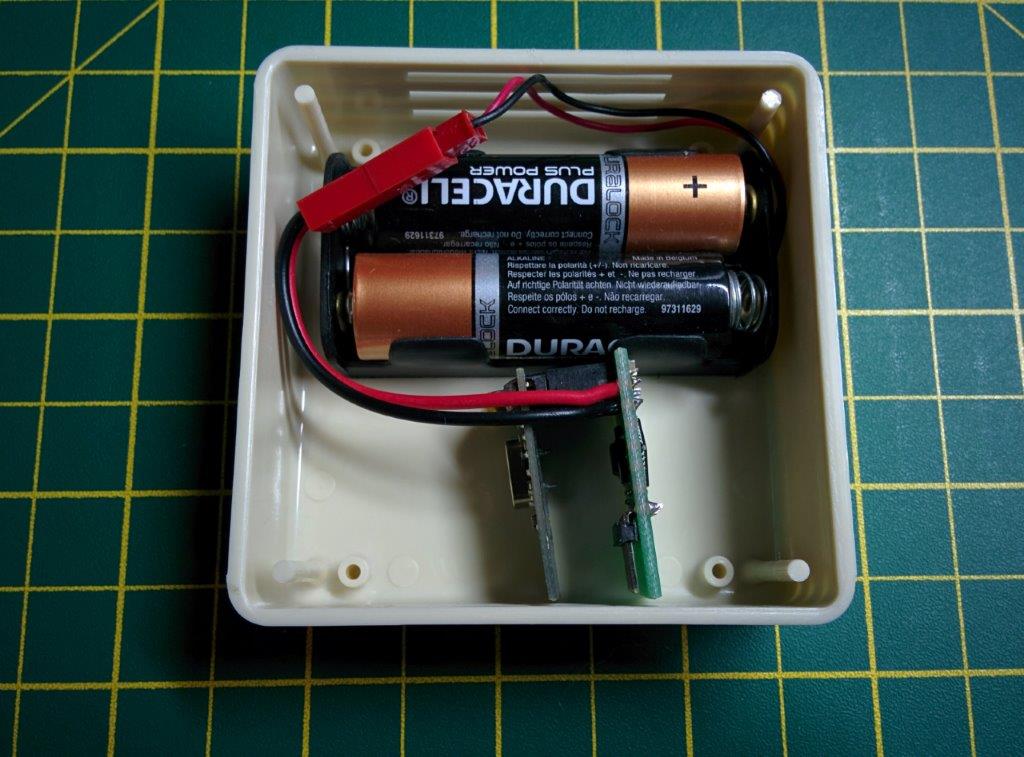Sensebender Micro
-
Got it from http://cpc.farnell.com/1/1/57932-evatron-pp42m-case-sensor-ivory-71x71x27mm.html.
Not the cheapest, but definitely worth the money as it is very good quality. There are other colours available (white and black) https://www.jprelec.co.uk/store.asp/c=552/Gas-Sensor-Case -
@tbowmo: I have some of these too, it's nice box. i got these from tme. cheaper :)
http://www.tme.eu/fr/details/box-sens-white/boitiers-dappar-dalarme-et-de-capt/supertronic/ -
Hello @tbowmo
Doesn't the atmega328 has only 2 pins which are D2 and D3 from external interrupts ?
I am wondering why do we waste the usage of D2 since the IRQ pin is not used in the library ? -
Hello @tbowmo
Doesn't the atmega328 has only 2 pins which are D2 and D3 from external interrupts ?
I am wondering why do we waste the usage of D2 since the IRQ pin is not used in the library ?@ahmedadelhosni because it is not in use by the library <yet>. Would be a shame if the library some day gets updated with support for a radio that can enter low power sleep and still wake when needed.
-
What @Anticimex said.. And at the time when I created the sensebender, I didn't know that the interrupt wasn't used (I was relatively new to the project) so I thought that we had to have it connected..
-
@ahmedadelhosni because it is not in use by the library <yet>. Would be a shame if the library some day gets updated with support for a radio that can enter low power sleep and still wake when needed.
@Anticimex @tbowmo This a valid point which I thought of but I needed two interrupt pins. As far as I knew from fast searching is that external interrupts which react to CHANGE in pin state are only valid for pins 2 and 3. Correct ?
Maybe there is another solution which I missed. -
And with a scalpel and a soldering iron you should be able to use both interrupts by disconnecting the one reserved for nrf24. Of course that would disable the use for rfm69 om that board.
-
And with a scalpel and a soldering iron you should be able to use both interrupts by disconnecting the one reserved for nrf24. Of course that would disable the use for rfm69 om that board.
@Anticimex Yeah I could just connect my device to the atmega pin directly as I can see/find any pin header to route the interrupt pin 2. They are all used.
Thanks guys.
-
I just received two sensebenders. I'm really impressed by the great engineering behind the board. I can't wait to heat up my soldering iron. I love them!
-
I just received two Sensebenders, but have problems getting the device to consume little power. I get totally different values as displayed above.
With the following sketch, I get about 5,6mA in active state and 1,6mA in sleep mode with nRF24 attached. I have compared different nRF24-chips and this one consumed the least power.
Without the nRF24, I get 4mA and 0,025mA (=25µA) during sleep mode.
#include <LowPower.h> #include "RF24.h" RF24 radio(9, 10); void setup() { } void loop() { delay(8000); LowPower.powerDown(SLEEP_8S, ADC_OFF, BOD_OFF); } -
I just received two Sensebenders, but have problems getting the device to consume little power. I get totally different values as displayed above.
With the following sketch, I get about 5,6mA in active state and 1,6mA in sleep mode with nRF24 attached. I have compared different nRF24-chips and this one consumed the least power.
Without the nRF24, I get 4mA and 0,025mA (=25µA) during sleep mode.
#include <LowPower.h> #include "RF24.h" RF24 radio(9, 10); void setup() { } void loop() { delay(8000); LowPower.powerDown(SLEEP_8S, ADC_OFF, BOD_OFF); } -
A general question regarding these types of boards that are generally designed to be used on battery power. Is there a reason to not power the ATSH204A and Si7021 from AVR pins? The pins can source far more than what these devices can sink (even when using the heating on the Si7021), and it would allow squeezing a tiny bit more out of the battery life by selectively powering down the devices.
Eg., if I'm not using the ATSHA204A at all, I can save 150nA continuous current. The power saving from disabling the Si7021 is less at about 60nA, so that might just be eaten up by having to wait up to 80ms before a full conversion.I'm aware that we're talking about saving a tiny ~200nA here, but over the span of two years that adds up to about 350mAh.
So what I'm wondering is simply, is there a technical reason saying that this really isn't a Good Idea (tm)? Should I avoid doing so if I design my own similar device?
-
A general question regarding these types of boards that are generally designed to be used on battery power. Is there a reason to not power the ATSH204A and Si7021 from AVR pins? The pins can source far more than what these devices can sink (even when using the heating on the Si7021), and it would allow squeezing a tiny bit more out of the battery life by selectively powering down the devices.
Eg., if I'm not using the ATSHA204A at all, I can save 150nA continuous current. The power saving from disabling the Si7021 is less at about 60nA, so that might just be eaten up by having to wait up to 80ms before a full conversion.I'm aware that we're talking about saving a tiny ~200nA here, but over the span of two years that adds up to about 350mAh.
So what I'm wondering is simply, is there a technical reason saying that this really isn't a Good Idea (tm)? Should I avoid doing so if I design my own similar device?
@ximinez said:
A general question regarding these types of boards that are generally designed to be used on battery power. Is there a reason to not power the ATSH204A and Si7021 from AVR pins? The pins can source far more than what these devices can sink (even when using the heating on the Si7021), and it would allow squeezing a tiny bit more out of the battery life by selectively powering down the devices.
Eg., if I'm not using the ATSHA204A at all, I can save 150nA continuous current. The power saving from disabling the Si7021 is less at about 60nA, so that might just be eaten up by having to wait up to 80ms before a full conversion.I'm aware that we're talking about saving a tiny ~200nA here, but over the span of two years that adds up to about 350mAh.
So what I'm wondering is simply, is there a technical reason saying that this really isn't a Good Idea (tm)? Should I avoid doing so if I design my own similar device?
I second that question. I was just thinking about a similar idea.
-
A general question regarding these types of boards that are generally designed to be used on battery power. Is there a reason to not power the ATSH204A and Si7021 from AVR pins? The pins can source far more than what these devices can sink (even when using the heating on the Si7021), and it would allow squeezing a tiny bit more out of the battery life by selectively powering down the devices.
Eg., if I'm not using the ATSHA204A at all, I can save 150nA continuous current. The power saving from disabling the Si7021 is less at about 60nA, so that might just be eaten up by having to wait up to 80ms before a full conversion.I'm aware that we're talking about saving a tiny ~200nA here, but over the span of two years that adds up to about 350mAh.
So what I'm wondering is simply, is there a technical reason saying that this really isn't a Good Idea (tm)? Should I avoid doing so if I design my own similar device?
That is indeed a good question. The straight answer is that I didn't think about that when I designed the board.
In theory you could also power the radio from a digital pin on the avr, and power that down completely.
BTW. If you turn on the heating element in the si7021 at full power, I think the power drain exceeds what the avr can deliver on a digital pin. But one could just avoid that.
-
I have been thinking about this as well. But I discarded parts of the idea because I needed the IO for other stuff (MYSX in my case). Instead I designed a switched rail where one could attach sensor power sinks. It's not io powered but it is io controlled.
Though I did not attach the si or atsha to this switch function as I decided to make it an optional feature but wanted to make sure authentication and temp/hum would always be available.




